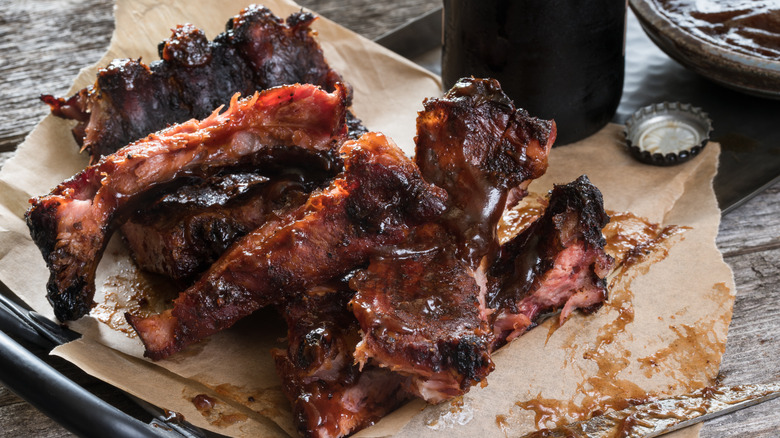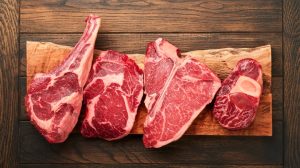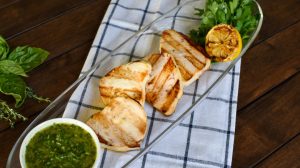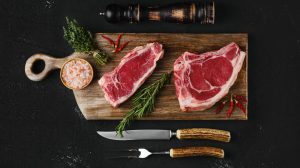There may be no more iconic barbecue product than ribs, and there is no regional barbecue style more well known than Kansas City. Your preference will vary of course, from dry rubs to mustard-based Carolina gold, but the sweet and sticky sauce of Kansas City is what most people outside of the regional BBQ centers think of when they think of barbecue. And that shellacked, glossy coat of dark sauce never looks better than when it is painted onto a plate of juicy, tender ribs. Unlike some other cities like Memphis, which has a strong allegiance to pork, Kansas City embraces all different kinds of cuts and animals, it’s a true melting pot of smoked meat. So if you want to make some Kansas City barbecue, you’ve got a few types of ribs to choose from, just make sure it isn’t too lean.
A well-marbled cut of ribs will have enough fat studded throughout it to keep naturally basting the meat as you wait for it to get tender. And who wants to spend five hours smoking ribs to end up with dry, flaky meat? That’s why you want to barbecue spare ribs, or country style, as both contain more fat and thicker meat on average than baby backs.
The normal downside to spare ribs is they take longer to cook, but you were going to be doing that anyway, so it’s of no concern. The best way to get them is St. Louis-style, which trims away excess bone and cartilage, making them easier to eat. And while they are not really ribs, bone-in country-style ribs are a better second choice than baby back.
Fat will keep your slow cooked Kansas City-style ribs juicy and tender
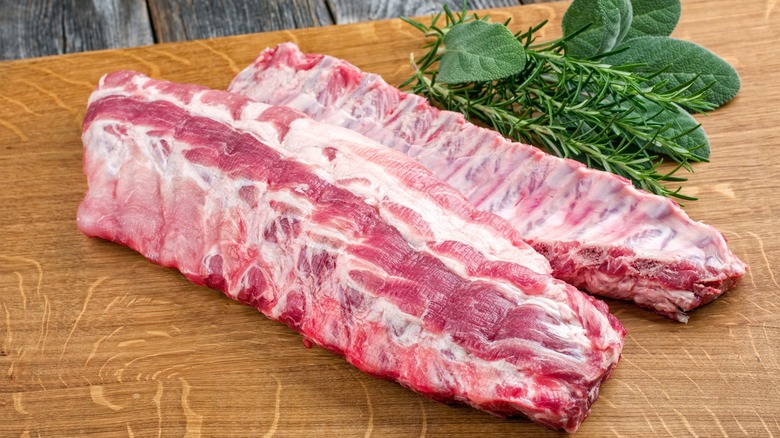
Anyone who loves barbecue is familiar with the idea of “low and slow,” cooking, and that term is made for ribs. They’re filled with fat and connective tissue that makes them tough until those things are cooked to break down. That happens at around 195 degrees Fahrenheit, but that only starts the process.
Ribs need a lot of time at or above that temperature to fully gelatinize all their tissue and get tender, and that can be north of five hours. While your connective tissue is breaking down, your meat is drying out; that’s the tough balancing act of ribs. It’s why they are cooked at such low temperatures, usually around 225 degrees Fahrenheit, which is just high enough to melt the tissue, but low enough to not overcook the meat. Even at that level, however, leaner cuts of meat are bound to lose their moisture, and they need extra fat to stay juicy. So as much as baby back ribs may have the name, spare ribs have what you really need.



